1. Cast Iron Skillets
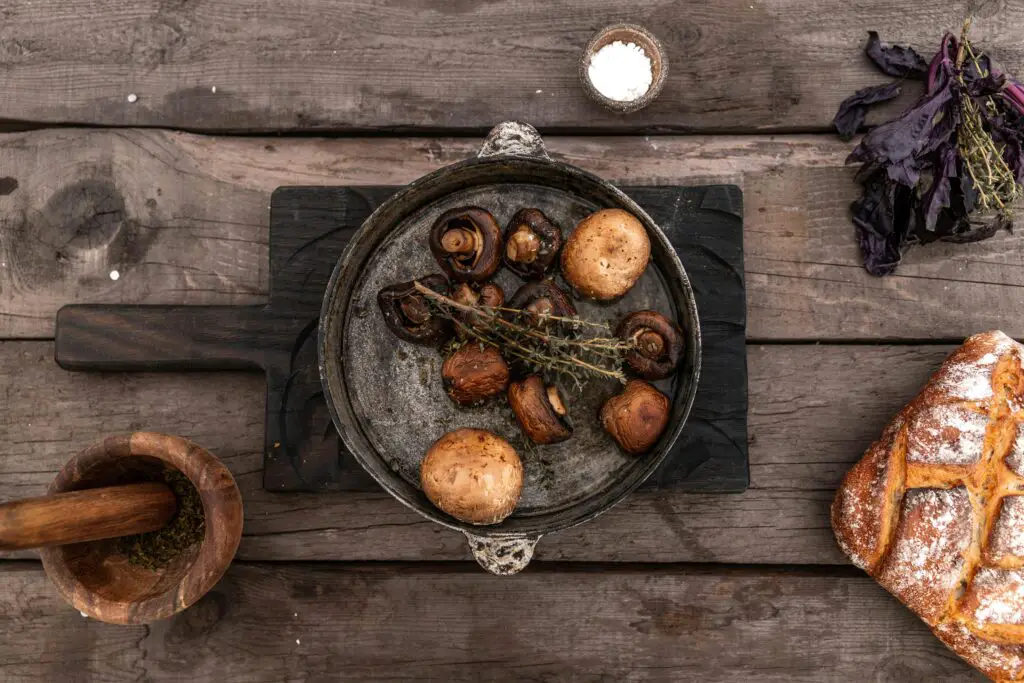
If your grandparents had a well-seasoned cast iron skillet, they probably used it for everything from frying bacon to baking cornbread. These skillets were built to last, and some are still cooking up meals today. Certain vintage brands, like Griswold and Wagner, are particularly valuable, with some selling for hundreds of dollars. Collectors love them for their smooth cooking surfaces, which modern cast iron doesn’t quite replicate. If you find one with a fully intact logo and no major rust, you might have a gold mine on your hands. Even well-used ones can fetch a good price if properly restored. The best part? They only get better with age says Food and Wine.
Collectors look for specific markings and model numbers, with older skillets commanding the highest prices. Some people buy them purely for display, while others prefer cooking with them, knowing they’ll last another lifetime. If yours has a heat ring on the bottom or a unique handle design, it could be even more desirable. Some rare pieces have been known to sell for well over $1,000 at auctions adds AOL. If you come across one at an estate sale or tucked away in a family member’s kitchen, it’s worth taking a closer look. What was once just a simple kitchen staple has now turned into a collector’s prize.
2. Pyrex Mixing Bowls
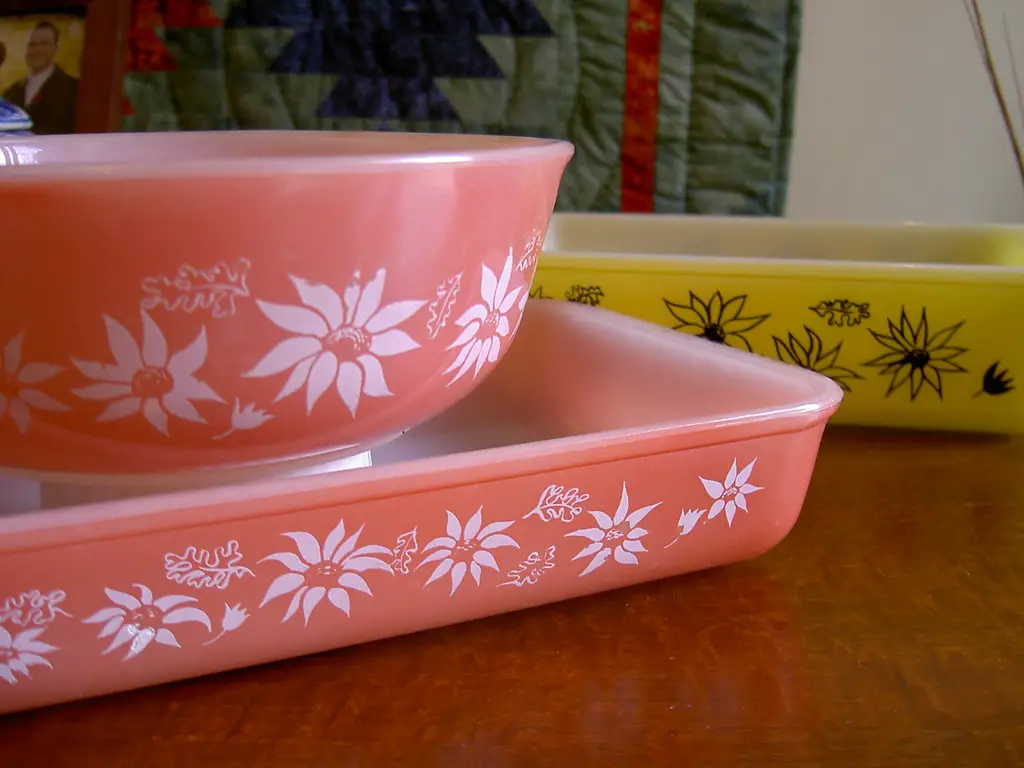
Grandma’s colorful Pyrex mixing bowls weren’t just pretty—they were practically indestructible. These glass beauties, especially the ones in vintage patterns like Butterprint or Gooseberry, are now highly sought after. A complete set in good condition can go for a few hundred dollars, and rare colors can be worth even more. The key is finding them without chips or fading, which can significantly lower their value. Some collectors use them daily, while others keep them on display like fine china shares ABC10 News San Diego. If you ever spot a set at a thrift store, grab it before someone else does. Who knew something so common in grandma’s kitchen would turn into a collector’s dream?
Certain Pyrex pieces are more valuable than others, especially those with promotional or limited-edition designs. The more vibrant the color, the higher the price, since fading is common after years of use. Even single bowls can be worth good money if they belong to a sought-after pattern. Some collectors hunt for specific lid styles or matching sets, making complete collections even more valuable. If your grandparents had a full set tucked away in a cupboard, you might be sitting on a small fortune. It turns out that vintage glassware is more than just pretty—it’s profitable, too shares Mental Floss.
3. Hand-Crank Egg Beaters
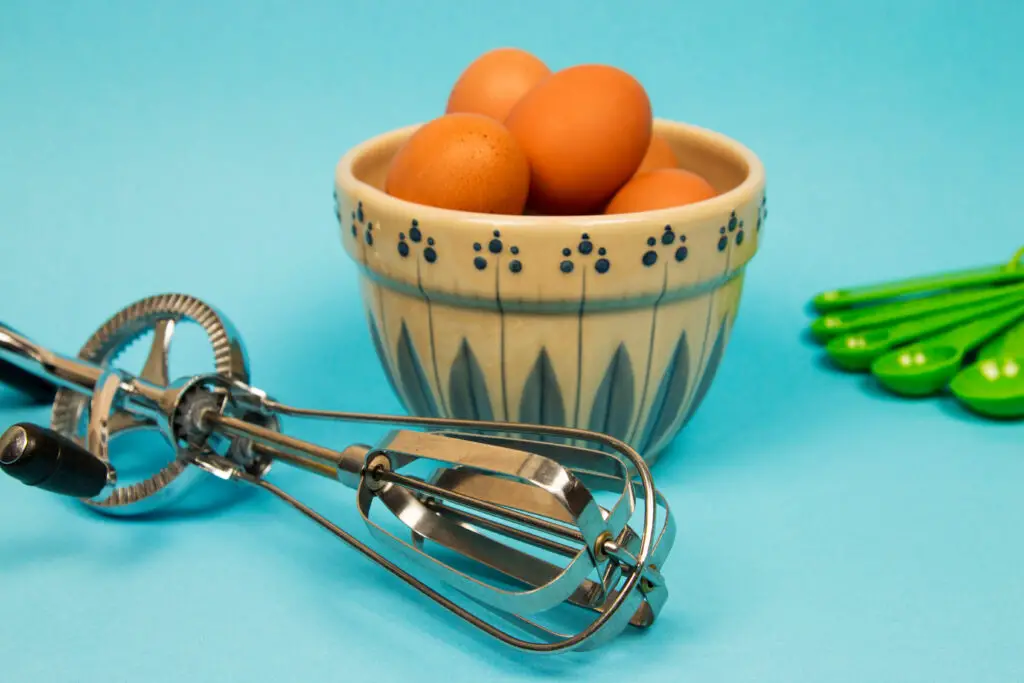
Before electric mixers took over, hand-crank egg beaters were a kitchen staple. These handy gadgets made whipping up batters and scrambled eggs a little more of a workout, but they got the job done. Brands like Dover and Androck made some of the most well-known versions, and today, they can be worth $50 or more, depending on their condition. The ones with wooden or brightly colored handles tend to be more collectible. Some people buy them for nostalgic decor, while others still use them in the kitchen. If you find one that still spins smoothly, it might be worth selling. It’s funny to think that something so simple could be worth real money now.
Collectors seek out specific models, especially those with unique handle designs or intricate branding. Some beaters even have patented mechanisms that make them more efficient, adding to their value. Those in pristine condition, with little to no rust, are the most desirable. Some home bakers prefer them over modern electric mixers for small jobs, saying they give them more control. Even if you’re not planning on making homemade whipped cream the old-fashioned way, an antique egg beater could be a great conversation piece. Who knew a kitchen tool once used daily could turn into a collector’s item?
4. Butter Churns

Once an everyday necessity, butter churns have become valuable collector’s items. The old-fashioned wooden barrel types and glass jar versions with hand cranks are especially desirable. Depending on the style and condition, they can sell for anywhere from $100 to over $500. Some people use them as rustic decor, while others appreciate their historical charm. If your grandparents ever made their own butter, there’s a chance they had one tucked away in a pantry or basement. The more complete the churn, the more valuable it is. A working one is even better since some folks still enjoy churning their own butter the old-fashioned way.
Certain brands and styles are more valuable, with rare models fetching higher prices at auctions. Some churns have embossed markings or company logos that make them even more collectible. The glass churns, often made by Dazey, are especially popular, particularly those with intact wooden paddles inside. Even worn or incomplete churns can be valuable as decorative items. If you ever find one at a flea market or antique shop, it’s worth looking up its history. What was once just a way to make butter at home is now a prized piece of kitchen history.
5. Depression Glass
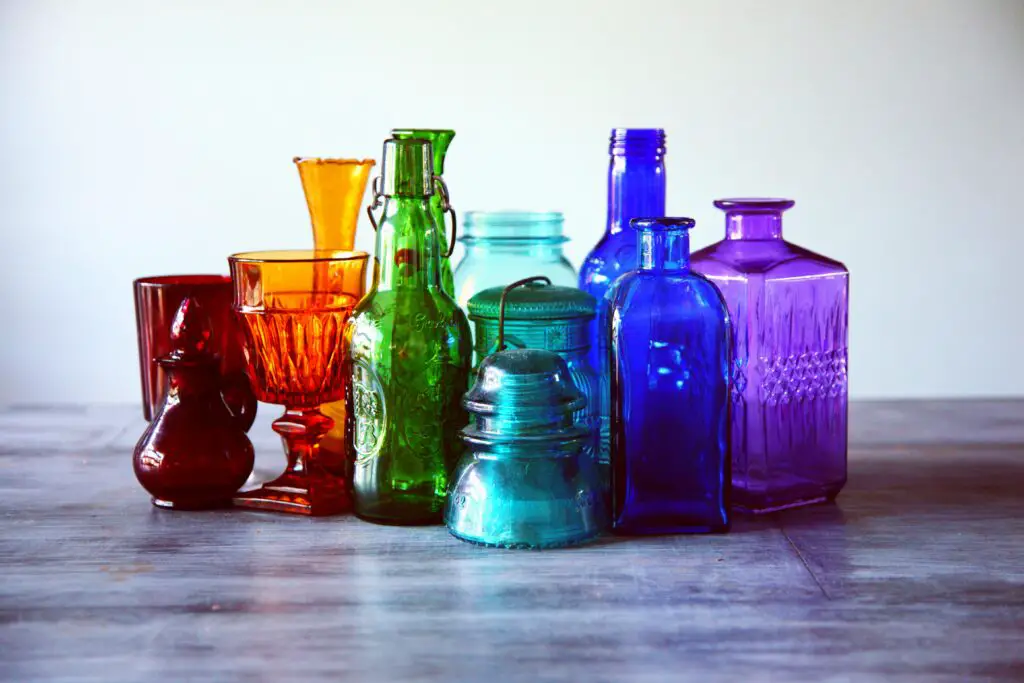
During the Great Depression, inexpensive glassware in bright colors became a popular way to add cheer to the kitchen. Today, collectors are willing to pay top dollar for complete sets or rare pieces. Pink, green, and cobalt blue are some of the most valuable shades, with certain patterns fetching hundreds of dollars. Even a single plate or cup can bring in a decent amount if it’s a sought-after design. Some people collect Depression glass for its beauty, while others love the history behind it. If you inherited a set, it might be worth more than you think. Just be careful—one little chip can lower the value significantly.
Certain manufacturers, like Hazel-Atlas and Federal Glass, produced patterns that are now highly desirable. Some of the most collectible designs include Cameo, Mayfair, and Royal Lace. Pieces in mint condition, without cracks or clouding, are worth the most. Even if you don’t have a full set, individual pieces can still fetch a decent price. Some collectors display Depression glass in lighted cabinets to show off its brilliant colors. What was once just everyday dinnerware has now become a sought-after collectible.
6. Meat Grinders
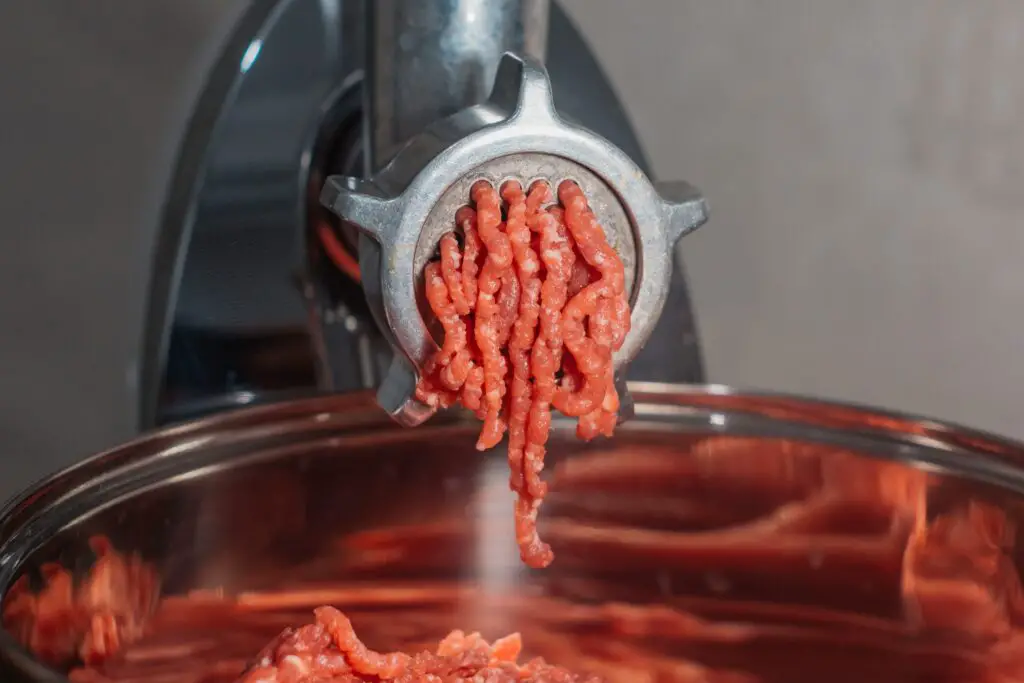
Back in the day, store-bought ground meat wasn’t as common, so families used hand-crank meat grinders at home. These heavy-duty metal tools clamped onto the counter and could turn cuts of meat into hamburger, sausage, or meatloaf mix. Vintage brands like Universal and Enterprise are especially valuable now, often selling for $50 to $200. The ones with all their original parts and a smooth-turning crank are the most desirable. Some home cooks still use them, swearing by their durability and better-quality grind. Others buy them as farmhouse-style kitchen decor. Either way, what was once an everyday necessity has turned into a collector’s item.
The oldest grinders, particularly those with wooden handles, are the most sought after. Some even have interchangeable plates for different grinds, making them more versatile. Collectors often look for models with embossed brand names or original packaging. A well-maintained meat grinder can still function as well as it did a century ago. If you find one in an attic or at a flea market, it could be worth more than you expect. What was once a simple food prep tool is now a valuable piece of culinary history.
7. Coffee Percolators
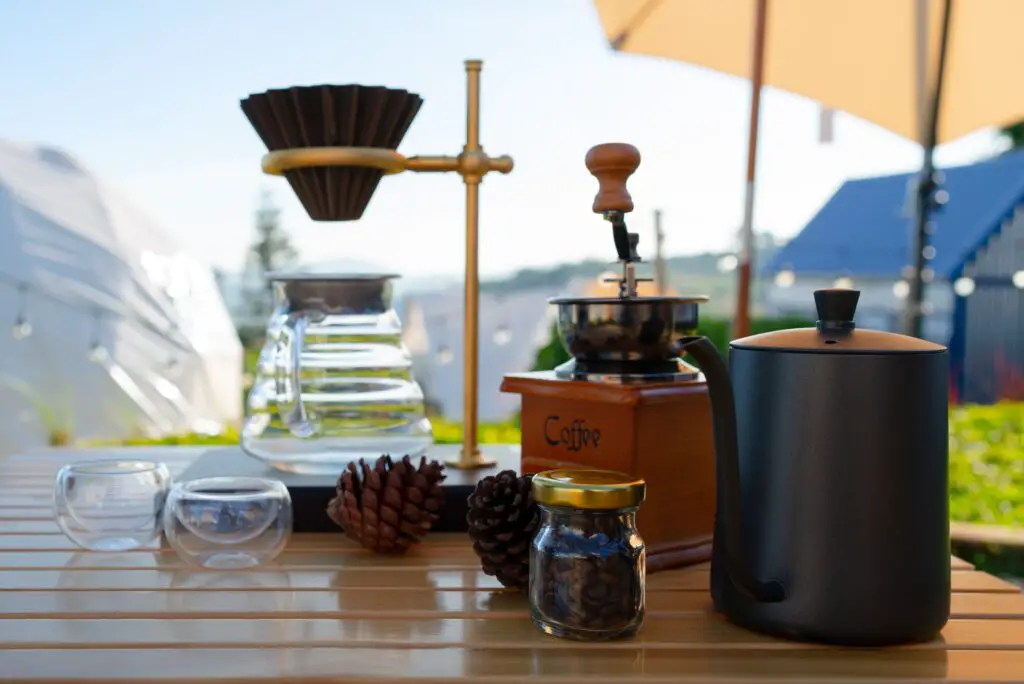
Before automatic drip coffee makers became standard, percolators were the go-to way to brew a strong cup of coffee. These stovetop or electric pots worked by cycling boiling water through coffee grounds, producing a rich, bold flavor. Vintage brands like Pyrex, Corning Ware, and Farberware are particularly collectible today. Some rare models, especially those with glass components or unique mid-century designs, can sell for $100 or more. The key to value is condition—cracks, missing parts, or discoloration lower the price. Some coffee lovers still swear by percolators, saying they make better coffee than modern machines. If you find one tucked away in a cabinet, it might be worth more than just nostalgia.
Collectors look for certain styles, especially chrome or enamel-coated designs from the ’40s and ’50s. Some percolators even have decorative patterns or colorful handles that add to their appeal. Complete sets with all original parts, including filters and power cords for electric models, tend to fetch the highest prices. Even broken percolators can be worth money if they’re from a rare brand, as collectors sometimes piece together working sets. While today’s coffee culture leans toward fancy espresso machines, these old-school brewers are making a comeback. Who knew grandma’s morning coffee routine could turn into a valuable collector’s market?
8. Rotary Cheese Graters

Before pre-shredded cheese was available in grocery stores, rotary cheese graters were a kitchen must-have. These handheld devices, often made of metal with a wooden or plastic handle, made quick work of hard cheeses like Parmesan. Brands like Mouli and Swing-A-Way produced some of the most popular models, and today, collectors seek them out for both nostalgia and function. Depending on the brand and condition, vintage rotary graters can sell for $50 or more. Some are even displayed as part of retro kitchen decor. The ones with bright-colored handles or original packaging tend to be worth the most. If you find one in a drawer, it might be time to dust it off and check its value.
Collectors appreciate graters with smooth-working mechanisms and minimal rust. Some older models even have interchangeable drums for different shredding sizes, making them more versatile. People who love old-fashioned cooking still use them, claiming they work better than modern plastic versions. Some of the earliest models, especially those from the ’30s and ’40s, are rare finds at estate sales. Even a slightly worn one can fetch a decent price from a collector looking to complete a set. What was once a simple tool for topping pasta has now become a sought-after piece of culinary history.
9. Rolling Pins

A good rolling pin was a necessity in any grandparent’s kitchen, whether for making homemade pie crusts, biscuits, or cookies. While modern versions exist, vintage wooden rolling pins—especially those with unique designs—are now worth real money. Collectors particularly love rolling pins with colorful handles, unusual wood grains, or engraved patterns for decorative baking. Some handcrafted or branded rolling pins from the early 1900s can sell for over $100. The more unique the design, the higher the value. Even simple well-worn ones have a rustic charm that makes them popular for farmhouse-style decor. If you have an old rolling pin lying around, it might be worth more than you think.
Condition is important, with smooth, crack-free wood being the most desirable. Some rolling pins even have company logos or maker’s marks, which add to their collectibility. Those with detachable handles or built-in flour sifters are especially rare. Even if you don’t bake from scratch, a vintage rolling pin makes for a charming kitchen display. Some collectors seek out entire sets of different sizes and styles. What was once just a tool for rolling out dough has become a piece of vintage kitchen art.
10. Bread Boxes
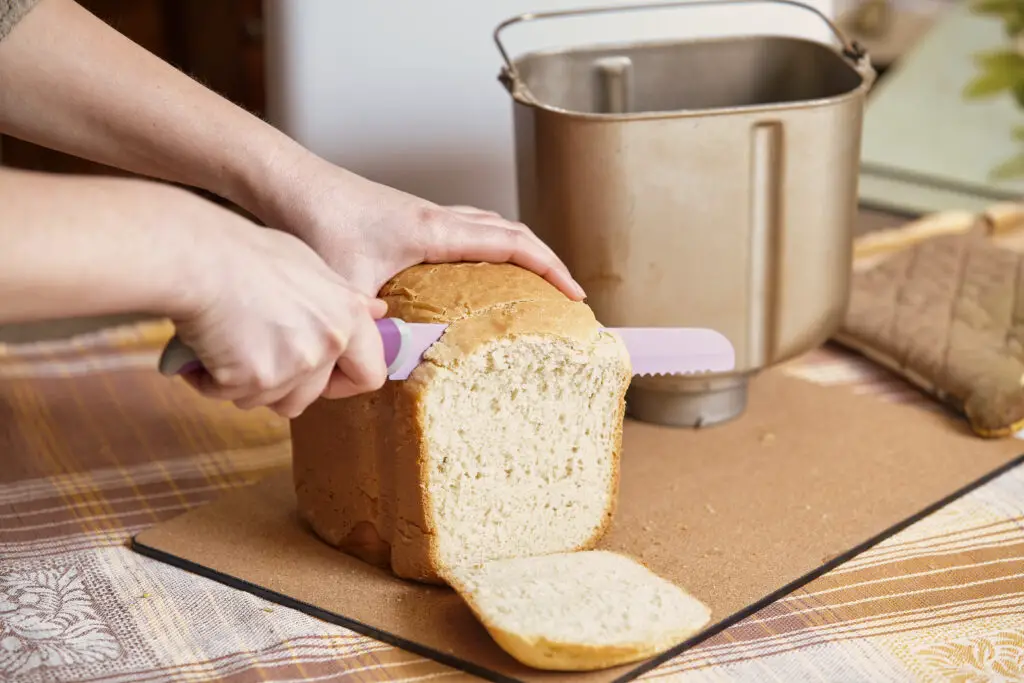
Before plastic bags and airtight containers, bread boxes kept loaves fresh on the kitchen counter. These metal or wooden storage boxes came in all sorts of colors and styles, many featuring retro fonts and designs. Mid-century brands like McCoy and Lustro-Ware are especially collectible, with some rare styles selling for over $200. The most sought-after ones have bright enamel finishes, interesting typography, or unique sliding doors. While they’re still practical today, many people buy them purely for their vintage charm. Even slightly worn boxes can fetch a decent price if the design is rare. If your grandparents had one sitting on their counter, it might be worth checking its value.
Collectors love finding bread boxes with minimal rust, intact hinges, and vibrant paint jobs. Certain color combinations, like turquoise and white or red and cream, are particularly desirable. Some people even use them as storage containers for other kitchen items, blending functionality with nostalgia. The older and rarer the design, the more valuable it tends to be. Even brands that aren’t as well-known can be worth money if the box has a striking look. Who knew a simple kitchen storage item could turn into a sought-after collectible?
11. Glass Juicers
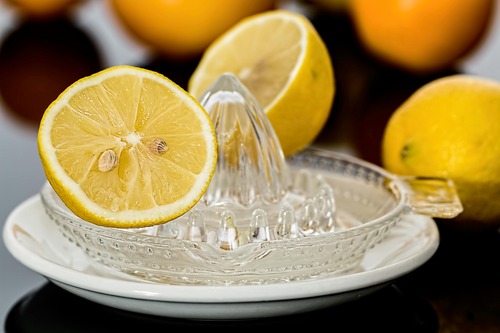
Before electric juicers took over, many kitchens had a simple glass juicer for squeezing fresh citrus. These handy little tools, often made of thick, colorful glass, were a staple for making fresh lemonade or adding a splash of juice to recipes. Vintage brands like Hazel-Atlas and Fire-King are especially collectible today, with some rare colors selling for over $100. Pink, green, and cobalt blue glass versions tend to be the most valuable. Some juicers came as part of a matching set with a pitcher, which can fetch even higher prices. If you have one with no chips or cracks, it might be worth more than just sentimental value. Many collectors love displaying them as part of a vintage kitchen theme.
The best-preserved juicers, especially those with clear markings or embossed brand names, are the most desirable. Some designs feature unique ridges or pour spouts that add to their charm. Even those with slight wear can be valuable, as they’re still functional and stylish. Some people prefer using these old-school juicers over modern plastic ones, swearing they work just as well. If you spot one at an antique store or tucked away in a cabinet, take a closer look. What was once a simple everyday tool is now a colorful and valuable collector’s item.
12. Flour Sifters
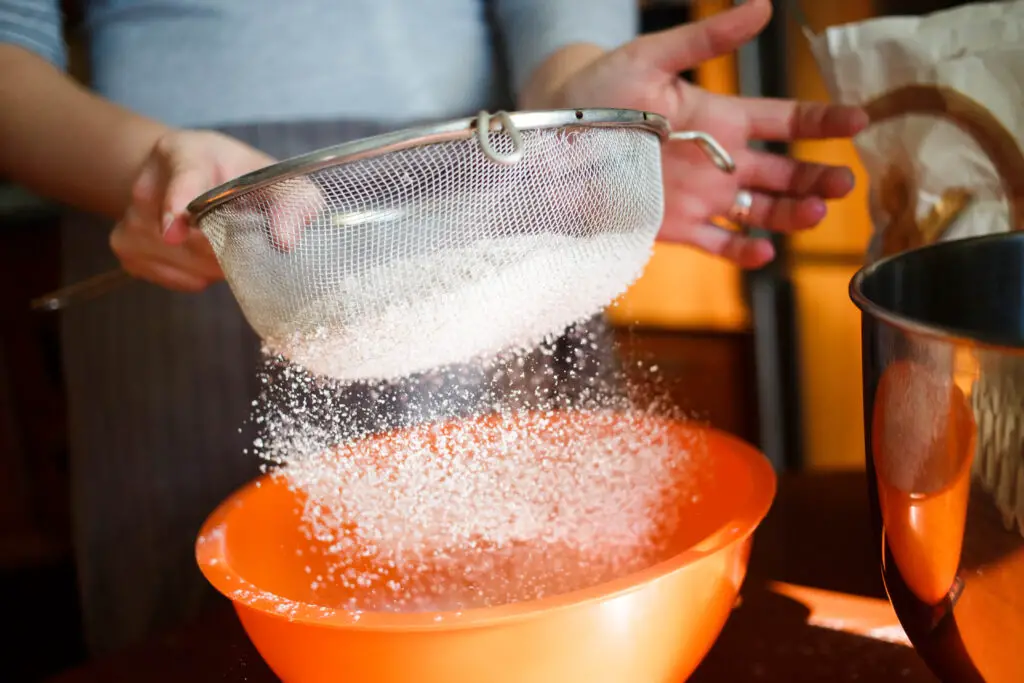
Back in the day, no baker would have been caught without a flour sifter. These hand-cranked tools made it easy to aerate flour and remove lumps, ensuring lighter cakes and cookies. Vintage sifters, especially those with painted designs or colorful handles, are highly collectible today. Brands like Bromwell and Androck made some of the most desirable models, with certain styles selling for $50 or more. Some have charming retro patterns, like flowers or polka dots, that make them popular for display. The ones with advertising logos or unusual metal finishes tend to fetch the highest prices. If you find one in good condition, it could be worth more than just a little dusting of flour.
Collectors look for sifters with smooth-turning cranks and intact screens. Some rare designs have double or triple screens, making them even more desirable. While they may not be as necessary in modern kitchens, many people still love using them for traditional baking. Others simply appreciate them as nostalgic decor pieces, adding a touch of vintage charm to their kitchens. Even slightly worn sifters can hold value if they have an interesting design. It’s amazing how something so simple can become a sought-after collectible.
13. Potato Mashers
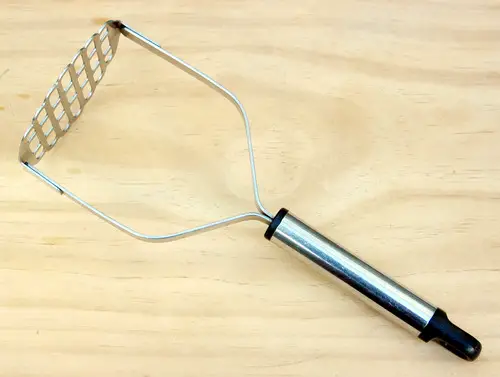
Before electric mixers and food processors, a sturdy potato masher was a must-have in any kitchen. These handheld tools, usually made of metal with a wooden or Bakelite handle, were used to make mashed potatoes, applesauce, and even baby food. Vintage potato mashers, especially those with colorful or unusual handles, can be worth $50 or more. Some feature decorative wood grains or bright enamel coatings that make them stand out. Collectors love finding mashers with rare handle colors, like deep red or bright turquoise. If the handle is intact and the metal isn’t too rusty, it could be worth more than expected. Some people still swear by these old tools for getting the perfect potato texture.
Certain designs are especially desirable, such as those with a zigzag or round-wire mashing surface. Some rare models have branding stamped into the metal, adding to their uniqueness. Even well-used mashers can find buyers, as they fit perfectly into vintage farmhouse or rustic kitchen displays. Some collectors seek out entire sets of kitchen tools with matching handles. If your grandparents had one tucked away in a drawer, it might be worth looking up its value. What was once just a simple tool for making mashed potatoes is now a fun and collectible piece of kitchen history.
14. Enamelware Cooking Pots
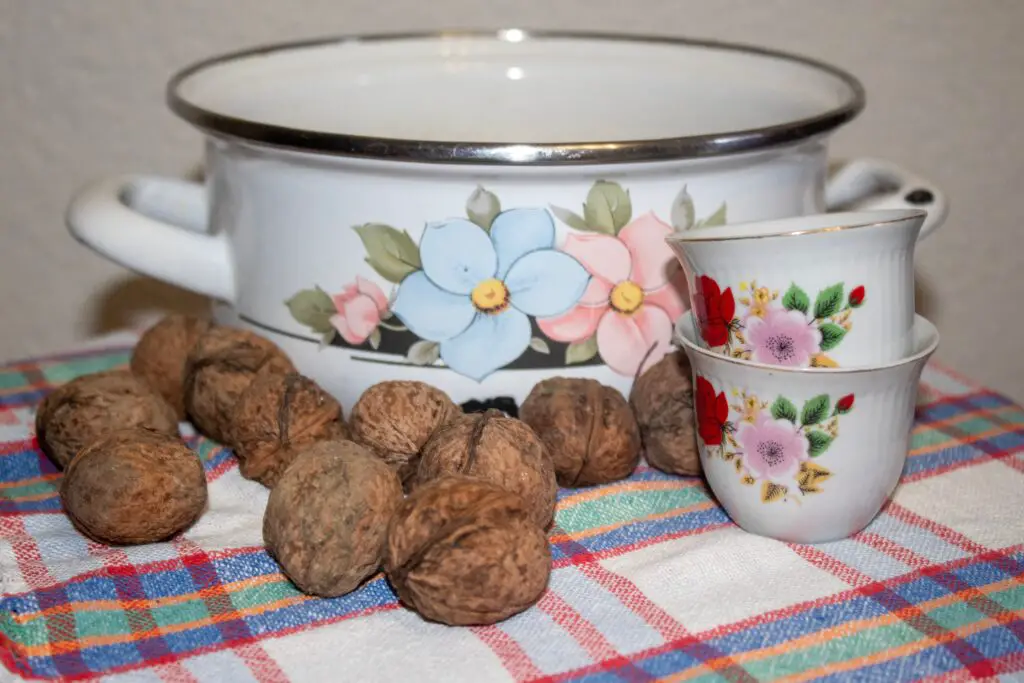
Long before stainless steel and nonstick cookware became the norm, enamelware pots and pans were kitchen staples. These sturdy, often speckled or brightly colored pieces were known for their durability and classic farmhouse look. Brands like Graniteware and Crow Canyon are highly collectible today, with rare colors and patterns fetching high prices. Some enamelware coffee pots, kettles, and saucepans can sell for over $200, especially if they’re in good shape. The most valuable pieces have intact enamel with minimal chipping. Collectors love the nostalgic charm they bring to a kitchen, whether they use them or just display them. If you find one with a unique pattern, it could be worth even more.
The most sought-after enamelware includes pieces in bold colors like red, turquoise, or deep blue. Some even have floral or plaid designs that make them extra collectible. Vintage camping sets, which often include matching cups and plates, are also popular among collectors. Even pieces with a little wear can still be valuable, as long as they aren’t overly damaged. Some people love using them for baking or serving, keeping the tradition alive. What was once a common cooking essential is now a stylish and valuable antique.
15. Recipe Boxes and Handwritten Cards
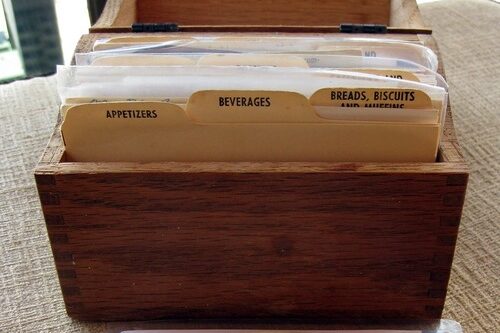
Before the internet and Pinterest, family recipes were carefully written on index cards and stored in a wooden or tin recipe box. These vintage recipe boxes, especially those with decorative designs or brand advertising, are now highly collectible. Some, especially those from the ’30s to ’50s, can sell for over $100 if they’re in good condition. The real treasure, though, is in the handwritten recipe cards themselves. Collectors love finding vintage recipes with notes in the margins, showing how home cooks adjusted them over the years. Even if the box itself isn’t rare, a collection of well-preserved recipe cards can be valuable. Some buyers are even looking for lost family favorites that remind them of their childhood.
Certain brands, like Ohio Art or Hallmark, made metal recipe boxes with charming floral or geometric patterns. Wooden ones, especially those with dovetail joints or carved details, are also desirable. Some people buy these old boxes just for the nostalgia, while others actually use them to store their own recipes. A box filled with old-fashioned dessert recipes can be a particularly special find. If your grandparents had one tucked away in a cupboard, it might be worth more than just sentimental value. What was once just a way to store family recipes has now become a cherished collectible.
